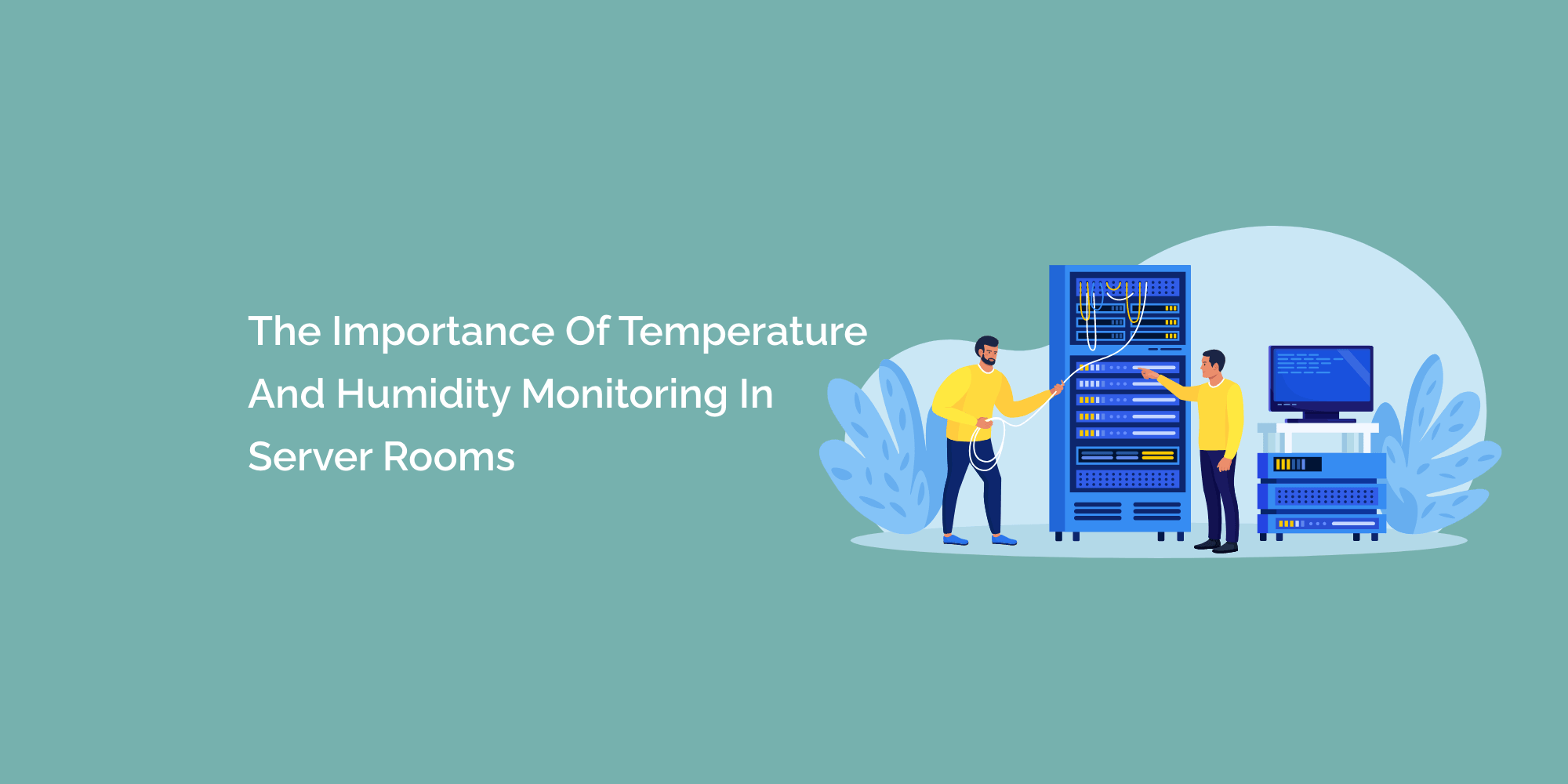Server rooms serve as the nerve center of businesses, housing critical IT infrastructure that keeps operations running smoothly. However, the efficient functioning of servers is highly dependent on maintaining optimal environmental conditions, particularly temperature and humidity levels. This blog will explore the importance of temperature and humidity monitoring in server rooms. We will discuss the risks associated with inadequate environmental control, the impact on server performance and reliability, and the role of monitoring systems in ensuring optimal conditions. By understanding the significance of temperature and humidity monitoring, businesses can proactively protect their valuable equipment, prevent downtime, and maintain the integrity of their data and services.
The Impact of Temperature on Server Performance
We will discuss how temperature fluctuations can impact server performance. Servers generate heat during operation, and without proper cooling mechanisms, temperature levels can rise, leading to increased energy consumption, reduced performance, and potential hardware failures. We will explore the ideal temperature range for server rooms and the consequences of temperature extremes.
The Role of Humidity in Server Room Environments
We will examine the role of humidity in server room environments. Excessive humidity can lead to condensation and moisture buildup, increasing the risk of equipment corrosion, electrical shorts, and damage to sensitive components. Conversely, low humidity levels can cause static electricity buildup, leading to electrostatic discharge (ESD) and potential damage to server hardware. We will discuss the recommended humidity range for server rooms and the implications of humidity imbalances.
The Risks of Inadequate Temperature and Humidity Control
We will outline the risks of inadequate temperature and humidity control in server rooms. These risks include reduced equipment lifespan, increased energy costs, decreased reliability, higher probability of hardware failures, data loss or corruption, and potential legal and compliance issues. Understanding these risks underscores the importance of implementing monitoring systems.
The Importance of Real-Time Monitoring
We will highlight the importance of real-time temperature and humidity monitoring in server rooms. Real-time monitoring systems enable businesses to continuously track environmental conditions and receive immediate alerts when predefined thresholds are exceeded. This allows for swift response and remediation, minimizing the impact of temperature or humidity fluctuations on server performance and stability.
Early Detection of Environmental Anomalies
We will discuss how monitoring systems aid in the early detection of environmental anomalies. Collecting and analyzing data allows these systems to identify patterns, trends, and deviations from normal conditions. Early detection enables proactive measures, such as adjusting cooling systems, addressing ventilation issues, or resolving humidity imbalances, before they escalate into critical problems.
Remote Monitoring and Alerting
We will explore the benefits of remote monitoring and alerting capabilities. Monitoring systems can be accessed remotely, allowing IT personnel to receive alerts and notifications on their mobile devices or through online platforms. This ensures that potential temperature or humidity issues can be addressed promptly, even if staff are not physically present in the server room.
Integration with Building Management Systems
We will discuss integrating temperature and humidity monitoring systems with building management systems (BMS). The integration allows centralized monitoring and control of various environmental parameters, including temperature, humidity, airflow, and power usage. This integration streamlines operations, enhances energy efficiency, and provides a comprehensive view of the server room environment.
Compliance and Regulatory Considerations
We will highlight the compliance and regulatory considerations related to temperature and humidity monitoring in server rooms. Many industries have specific requirements for data centers and server room environments, such as HIPAA for healthcare or PCI DSS for payment card processing. Implementing monitoring systems helps businesses demonstrate compliance and meet regulatory obligations.
Data Analysis and Trend Identification
We will discuss how temperature and humidity monitoring systems can analyze data and identify trends. These systems can generate reports and visualizations that provide insights into environmental conditions over time. By analyzing this data, businesses can identify potential areas for improvement, optimize cooling strategies, and enhance overall ecological control.
Certainly! Here are some frequently asked questions (FAQs) about temperature and humidity monitoring in server rooms:
Why is temperature monitoring necessary in server rooms?
Temperature monitoring is crucial in server rooms because servers generate heat during operation, and excessive heat can lead to reduced performance, increased energy consumption, and potential hardware failures. Monitoring helps maintain optimal temperature levels to ensure the reliable operation of servers and prevent damage.
What is the ideal temperature range for a server room?
The ideal temperature range for a server room is typically between 18 to 27 degrees Celsius (64 to 80 degrees Fahrenheit). This range ensures that servers operate within their recommended temperature limits, promoting optimal performance and longevity.
How does humidity affect server room environments?
Humidity affects server room environments by influencing moisture levels. Excessive humidity can lead to condensation and moisture buildup, which can cause corrosion and damage to sensitive server components. On the other hand, low humidity levels can create static electricity, increasing the risk of electrostatic discharge and hardware damage.
Conclusion
Temperature and humidity monitoring in server rooms is paramount to ensure optimal server performance, prevent hardware failures, and protect valuable data and services. By understanding the risks associated with inadequate environmental control, businesses can implement real-time monitoring systems, leverage remote access capabilities, and integrate with building management systems. These measures help ensure a proactive response to temperature and humidity fluctuations, mitigate risks and maintain a stable and reliable server room environment. By prioritizing temperature and humidity monitoring, businesses can safeguard their critical IT infrastructure, minimize downtime, and ensure uninterrupted operations.








